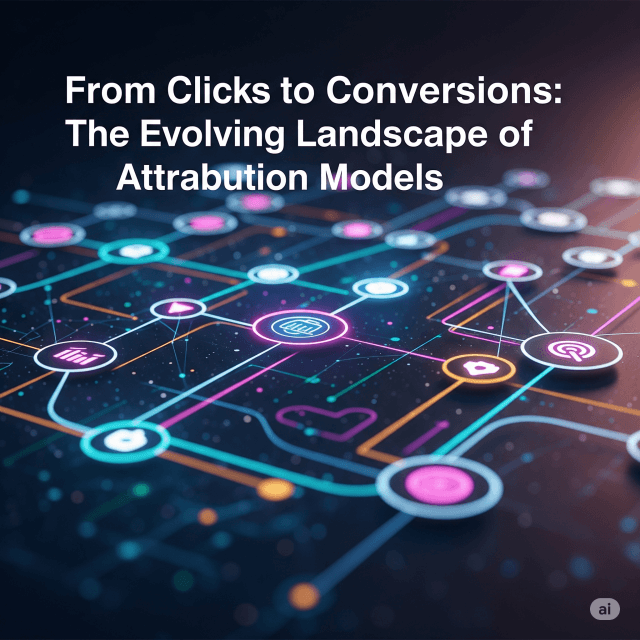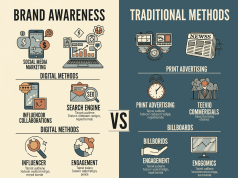In the fast-paced world of digital marketing, understanding how customers move from mere clicks to actual conversions is crucial for optimizing campaigns and maximizing return on investment (ROI). This process is intricately tied to attribution models, which help marketers decipher the effectiveness of their various touchpoints throughout the customer journey. As technology advances and consumer behavior shifts, the landscape of attribution models is evolving significantly. This article explores the nuances of attribution models, their evolution, and the future of attribution in digital marketing.
What Are Attribution Models?
Attribution models are frameworks used to assign value to different marketing channels and touchpoints that contribute to a conversion. They help businesses understand which marketing efforts are driving results and how to allocate resources effectively. Attribution models can be broadly categorized into two types: Single-Touch Attribution Models and Multi-Touch Attribution Models.
Single-Touch Attribution
First-Click Attribution: This model credits the very first touchpoint that led the customer to your brand. It’s useful for understanding the channels that create initial awareness but falls short in capturing the full customer journey.
- Last-Click Attribution: Conversely, this model assigns all the credit to the last touchpoint before conversion. While it simplifies the analysis process, it often overlooks crucial interactions that occurred earlier in the customer journey.
Multi-Touch Attribution
Multi-touch models aim to provide a more comprehensive view of the customer journey by distributing credit across various touchpoints.
Linear Attribution: Each touchpoint in the conversion path receives equal credit. This model offers a balanced perspective but may dilute the value of more influential touchpoints.
Time-Decay Attribution: This model gives more credit to touchpoints closer to the conversion event, reflecting the notion that more recent interactions are likely to be more impactful.
- U-Shaped Attribution: In this model, the first and last touchpoints receive more weight, acknowledging the importance of both initial awareness and final conversion-driven interactions.
The Challenges of Attribution
As marketing channels diversify and consumer behavior becomes more complex, measuring attribution poses several challenges:
Cross-Device Tracking: Consumers often engage with brands across multiple devices, making it difficult to accurately allocate credit to each touchpoint.
Data Privacy Regulations: With increasing concerns about data privacy, regulations like GDPR and CCPA limit the use of tracking cookies, further complicating attribution efforts.
- Channel Overlap: Many marketing channels are interdependent; a customer may see a digital ad and later engage through an email campaign, making it challenging to assign credit accurately.
The Evolution of Attribution Models
Emergence of AI and Machine Learning
As digital marketing becomes more data-driven, artificial intelligence (AI) and machine learning are transforming attribution models. These technologies enable marketers to analyze vast amounts of data in real-time, revealing complex consumer behaviors and interactions that traditional models may overlook. Predictive analytics helps identify which marketing strategies are likely to yield the best results, allowing for more agile and effective marketing campaigns.
The Rise of Algorithmic Attribution
Algorithmic attribution refers to models that automatically adjust the credit assigned to each touchpoint based on their actual influence on conversions. This approach leverages historical data to determine how much weight to give different channels, creating a dynamic and responsive attribution model that adapts to changes in consumer behavior.
The Integration of Customer Journey Mapping
Understanding the customer journey is critical for effective attribution. Businesses increasingly focus on mapping out the entire customer experience, allowing for a more holistic view of how various touchpoints work together. This integration can lead to more nuanced attribution models that consider emotional and contextual factors influencing decision-making.
The Future: Holistic Attribution
As marketing continues to evolve, the future points toward holistic attribution models that consider every aspect of the customer’s interaction with a brand. This includes not just digital touchpoints but also offline influences, social factors, and even traditional media. The goal is to create models that not only measure conversions but also provide insights into customer behavior, preferences, and overall brand perception.
Conclusion
The journey from clicks to conversions is complex and multifaceted, requiring a robust understanding of attribution models. As technology continues to advance and consumer behavior evolves, the landscape of these models will undoubtedly change. Marketers need to stay ahead of these trends, leveraging AI, customer journey mapping, and a holistic approach to attribution. By doing so, they can effectively measure the impact of their marketing efforts, optimize campaigns, and ultimately drive greater conversions and business growth. The evolving Nature of attribution is not just about understanding what works but also about preparing for what lies ahead in the dynamic world of digital marketing.









